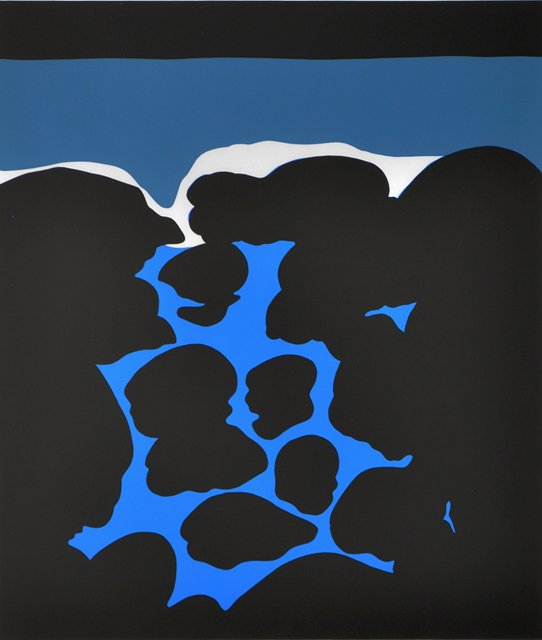Auckland Art Gallery News, July–October 2005.
I was introduced to New Zealand art at high school. Scattered among the old-master and modern-master reproductions lining Takapuna Grammar’s corridors were screenprints from Barry Lett Galleries’ 1968 Multiples portfolio. It featured the key painters of the day, from the nationalist-landscape end (Colin McCahon and Michael Illingworth) through to geometric abstraction (Milan Mrkusich, Gordon Walters, and Ralph Hotere). It was the canon, more or less; a kind of New Zealand art primer. Back then, screenprinting was considered a poor cousin to real printmaking, yet it perfectly captured the hard-edged aesthetic of the day; only Toss Woollaston struggled to make something of it.
My favourite image was Michael Smither’s Wave Invading Rock Pool. It was hard-edged impressionism, if that makes sense. Basic stenciled shapes and a few unmodulated colours—simple. But the forms were ambiguous. You had to orient yourself to the image through the title, otherwise those rocks could have easily been clouds. If Smither’s paintings of that time suggested a devotional investment—in the labour spent in patiently rendering, say, hundreds of individual pebbles—this print’s virtues were different, exploiting what screenprinting achieves easily. This pared-back look would typify Smither’s prints through the 1970s and beyond.
Working with his father, Smither produced lots of screenprints, and got them out there. They were unashamedly populist and appealing. Featuring iconic local landforms, they promoted and embedded Smither’s vision of Taranaki. Following McCahon and Don Binney, their graphic look seemed to imply an environmentalist ethic, suggesting not only a pure landscape but a pure attitude towards landscape. When I went to live in New Plymouth in the early 1990s, Smither’s prints were ubiquitous, hanging in hotel rooms, waiting rooms, cafes, and homes throughout town, ever on message, instructing citizens in how to regard their environment. Smither’s prints achieved their mission: opening their public’s eyes to the particularities of the place or predisposing them to see it his way.
.
[IMAGE: Michael Smither Wave Invading Rock Pool 1968]
